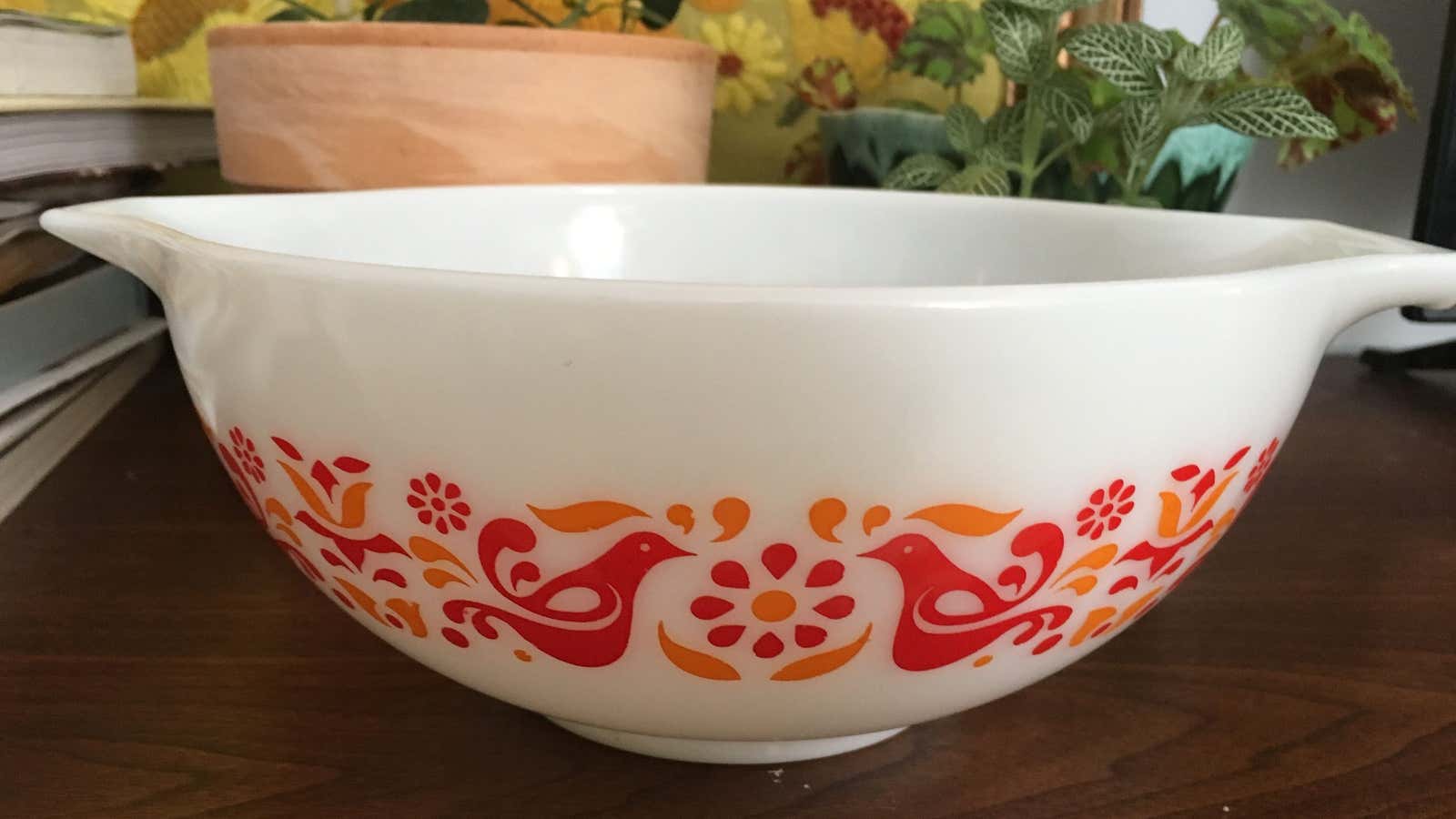Pyrex nesting bowls and bakeware occupy a special place in the pantheon of vintage cookware. They’re functional, beautiful, and in some cases, valuable—coveted collectors’ items that can also be used every day, and a powerfully nostalgic reminder of childhood kitchens for those who grew up with cookware. Indeed, some devoted fans identify so deeply with the American brand that they get inked with Pyrex pattern-inspired tattoos.
Pyrex’s iconic designs were pretty, and durable enough to hold up for decades, and still have fans in the design world. Like mid-century modern furniture from companies such as Lane and Haywood Wakefield, Pyrex was a fixture in middle class homes of the mid 20th century—a well designed, affordable hallmark of the post-war era.
Made from borosilicate glass, Pyrex is thinner, lighter, and more durable than traditional glass. It’s heat-safe enough to go in the oven (though not directly on a burner), and in the dishwasher. Originally used in military mess halls, Pyrex became much more colorful and whimsical when it made its way into home kitchens.
That shift started in 1936, when Corning Glass Works purchased a second factory that, unlike its original glassworks, had the capacity to produce colorfully opaque borosilicate bowls and casserole dishes. From 1945 to 1986, dozens of designers would explore the possibilities of this new product, producing more than 100 different patterns and variations, which adorned casserole dishes, storage containers, chip and dip bowls, and of course mixing bowls—all under the brand name Pyrex.
The nesting bowls, which were first introduced in bright primary colors in 1945 and then were decorated with patterns, became the most iconic Pyrex items, and the company regularly released them in new designs, many of which became fixtures in cupboards around the country. Some motifs, like the folksily cheerful red, orange, and yellow Friendship design, and the modish daisies of the Spring Blossoms series, became instant classics, and remain in heavy circulation in thrift stores and yard sales. Others, like the super rare Lucky in Love, have become estate sale unicorns that sell for small fortunes on eBay.
Tattoos often make statements about the bearer’s aesthetic, values, and priorities, and Pyrex tattoos are no exception. A set of flower-covered nesting bowls, for example, evokes a kitchen that regularly produces baked-from-scratch cookies and thriftily saved leftovers. Becky Matheson, a tattoo artist in Nova Scotia, told the Los Angeles Times that she got her tattoo of a hen sitting in a Pyrex tea cup in the Butterfly Gold pattern because it reminded her of her grandparents.
It’s not just a tribute to good design. It’s also about a way of life, one that values homemade over packaged, and the thrift store over the big box retailer.
